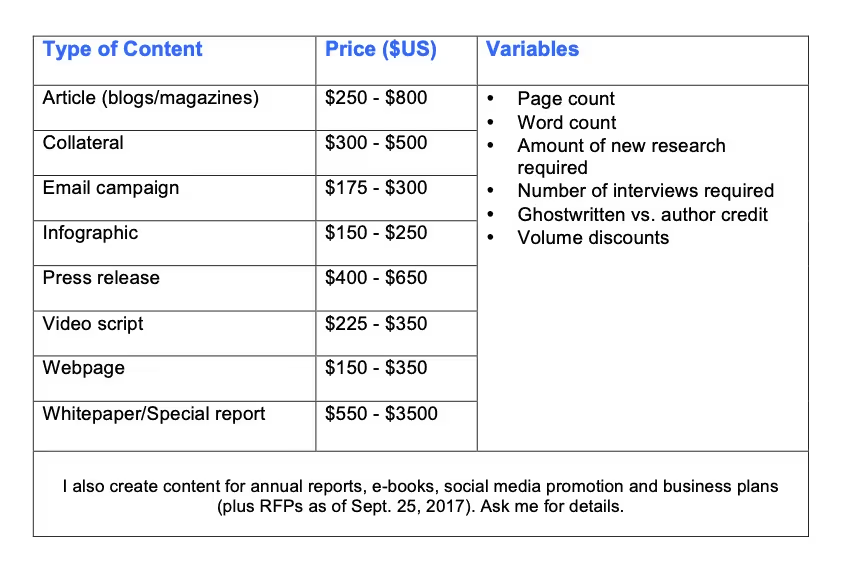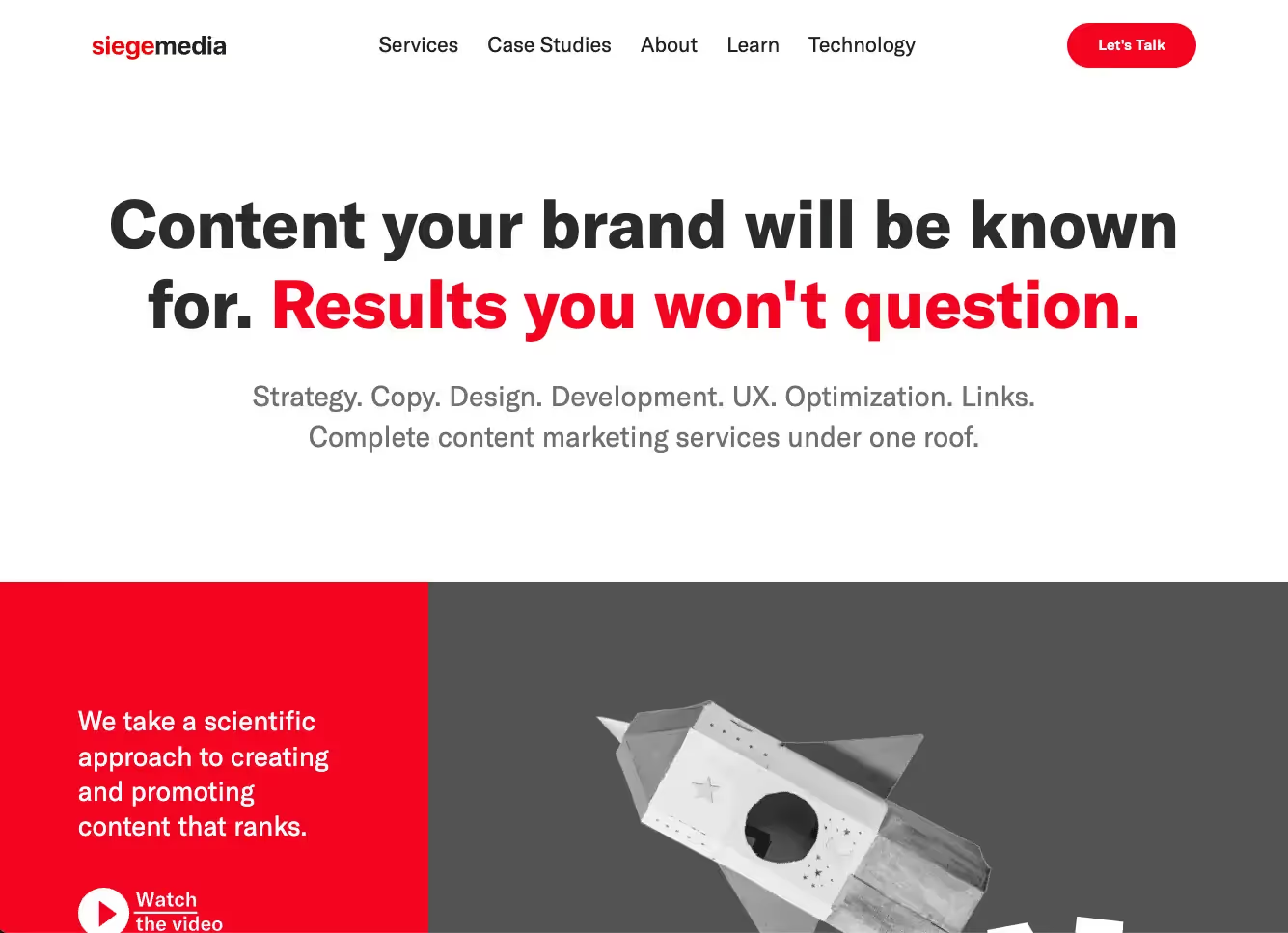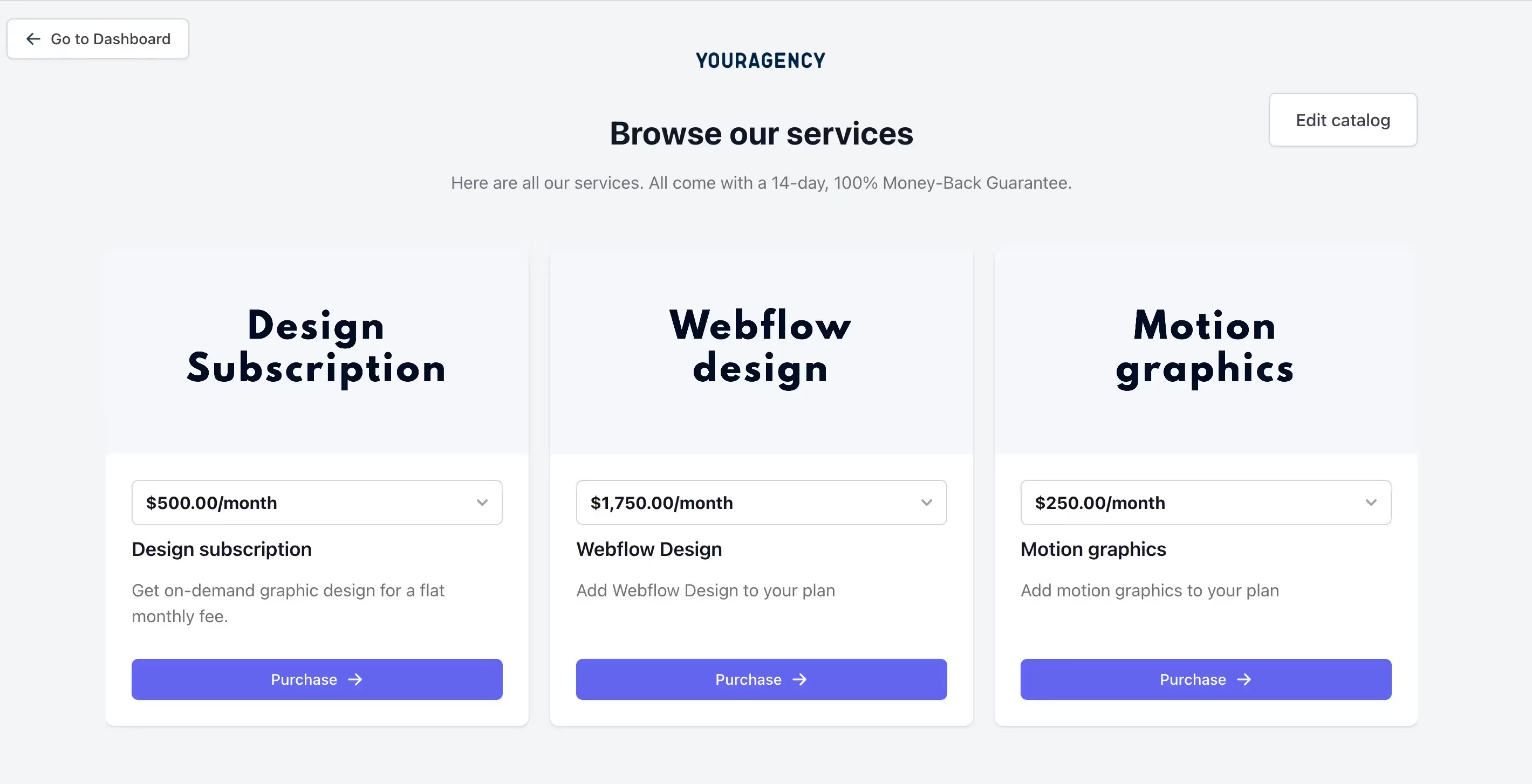Agency Rate Cards: How To Use Them Effectively [Guide]
Rate cards are a powerful tool to sell more agency services when used the right way. Here's how you can use them effectively to grow your own agency.




Rate cards are an interesting sales asset for an agency.
They sit between a fully-custom proposal and a “productized” service.
(i.e. a packaged service with public pricing - usually on the agency’s website)
But they can be a double-edged sword.
Showing how you price your team’s time line by line leaves you vulnerable to customers making direct price comparisons with other agencies—and remember:
» There are always going to be agencies that are cheaper than you.
That is what’s called a “race to the bottom” in business lingo.
No matter how much value you deliver, if all the customer sees are your prices, they’ll decide based on what costs them less. It’s not unreasonable to think of, but there are strategies to avoid it.
Rate cards are extremely effective for specific types of agencies, usually those that specialize in narrow areas that are hard to shop for—like expertise in a niche programming language.
That doesn’t mean they can’t work for you.

It’s important that you make a conscious choice with rate cards though as they’re not * just * a sales asset; they represent a fundamental part of your overall pricing strategy.
(i.e. Don’t wing it when it comes to pricing!)
One way that smaller agencies avoid the “restaurant menu” effect rate cards produce is to productize their services and base almost their entire business model on packaged monthly retainers.
In my experience, this is a better choice for small agencies.
We’re talking anywhere from $500 to $5000 per month client investments.
For agencies that have higher intake per client, say anywhere from $5000 to $15000 per month, rate cards become important because customers start buying talent more than a package of services.
A lot of upmarket consulting firms (similar to agencies in nature) use this model:
It might sound like some evil scheme at first, but it’s not.
Consulting firms like these deliver real value to larger companies as they accumulate a huge wealth of knowledge and can solve complex issues rather quickly.

Adding +50 / 60% to the team’s hourly rate makes it possible to devote 20-30% of the resources to good management (e.g. account managers, business analysts, etc.) and retain another ~30% as profits.
This is good business for everyone involved.
So, in many ways, rate cards are a way to go upmarket!
In and of itself, a rate card could be seen as a utilitarian tool.
It’s just a list with some prices!
But if you’ve ever felt the feeling of going to a restaurant and being overwhelmed with too much choice or struck by poor variety—you’ll know that rate cards are really important sales and marketing assets.
If used right, they can make the difference between a sale and a lead ghosting you.
(Happens to the best of us…)
So, what should a rate card include?
Rate cards should be used primarily as references to help prospective customers with a robust business structure understand for themselves if it makes sense to work with you in the long run.
They shouldn't be overly complex but neither dumbed down too much.
As with any pricing strategy, balance and perceived value win.
What that means in practice:
The entire goal of a rate card is to show that you are a trusted, experienced partner in the activity the customer wants to hire you for. Include how many staff you have for each seniority level.
Also, try to add some context to each line item.
Don’t just pitch slap your prospect with a spreadsheet full of numbers.
Use the rate card to guide them towards a decision.
Make them functional and beautiful.
Even if you’re just listing things you might know off the top of your head, don’t take it for granted that people on the other end will understand. For each line item, ask yourself a few questions:
Answering the last question in particular is crucial.

Sometimes customers will * just * ask for a price list, but in most other cases what they mean is, they want to see what you have to offer, how you offer it, and if it’s worth it for them to invest in.
Remember, rate cards are more about marketing than financials.
Overwhelming the customer with choice isn’t a great strategy.
If you have 30 prices that they have to sift through just to try and understand what value they can get from you, you’ll just end up confusing them, especially if they’re not a large enterprise.
Be intentional about your agency’s rate cards:
There’s a lot of psychology behind pricing, and every inch of that rate card has to exude value.
And the way you channel value is by compacting and focusing your offer.
Start with a simple 4 to 7 price rate card.
Move your way up to more pricing tiers only if the customer doesn’t seem to find the right slot. If they do find it but don’t use other tiers enough, consolidate the lesser used ones into the higher price ones.
Ok, rate cards are pretty useful for a growing agency.
But when should you actually present them to a potential customer?
Is there a moment during the sales process when they work best?
Fortunately, the answer is yes.
But it varies based on the size of your agency….
Small agencies usually work on a fixed project basis for a reason: it reduces the risk for both parties involved and doesn’t tie you down to endless “team extension” contracts.
As a small agency, you often can’t afford to dedicate an entire team member to a single customer project.
It goes against the idea of being a small firm in the first place—acting quickly and innovating from an external point of view.
Rate cards slow that process down.
However, you can use blended rates as a small agency. But my professional experience has always been that productizing your services is better at this stage.
Why?
Because it kicks in some much needed cash flow.

When you correctly identify a need in the market (e.g. Webflow website design) and create pricing tiers available publicly on your website, you increase trust and can often get quicker customer feedback, leading to a shorter sales cycle than trying to convince them via a rate card.
“Productizing” usually means offering monthly recurring services, but there are other ways of doing it, like offering a-la-carte pricing for a blog post write ups or content strategies for example.
It’s pretty much like a traditional rate card, but with clear, packaged deliverables. The only downside to productizing is that you won’t have any room for negotiation whatsoever.
You either get the price right or the customer won’t budge.
Why would they if what they see on your website is a fixed price amount? Make sure you use the right wording to describe each tier — try to avoid words like “unlimited”, “100% guarantee”, etc.
Instead, focus on:
And, most importantly, raise your prices quickly. Don’t wait for next year to come by — demand
always comes when you least expect it. Low prices will bog your agency down over time.
In my experience, rate cards become highly-relevant as your small firm grows into a mid-size business, where you can actually start divvying up various internal resources.
In this setting, rate cards act as a reinforcing mechanism.
They show that you do have the manpower to help with a customer’s project, and they help you win more deals for this reason (among others). The customer will use them as reference to go off when you present them with the project proposal and bill them as part of your contract.
To structure a rate card at this stage:
As a mid-size agency, use rate cards when relevant. Sometimes a standard proposal will do, and it will keep the conversation fixed on the overall value of your services rather than line items.
But when customers ask, use your best knowledge of the market to undercut legacy providers while charging a premium compared to entry level agencies.
Larger agencies and consulting firms almost can’t live without a rate card.
That’s because at this level you’re usually working with large corporate clients, and they usually want to know how much it costs to hire one of your consultants per hour.

Often these companies accept both project and hourly fees at the same time.
They are entirely used to complex deals and large projects, so seeing a spreadsheet of prices and seniority tiers isn’t all that uncommon to them. Still, you should try to keep things concise.
One way that you can make a rate card effective at this stage is to slightly personalize what’s shown on each rate card based on your customer’s needs.
For example:
» If a customer needs you to help with a backend development project, but has no interest in designing a beautiful user interface, there is no need to list designers in.
In a small setting, prospects can just skim over the design part and get to the programming one.
But in a 100+ employee setting with dozens of roles and seniority levels, it’s just not necessary.
Instead, do lean into seniority.
Larger customers love to work with experienced consultants as they tend to allocate a lot of value to deep expertise in their fields which they know will come from seasoned professionals.
Rate cards have been around for decades.
They’re nothing new, but there are new ways to represent them digitally instead of slapping some text on a PDF and calling it a day. (Seriously, that’s the reality for most rate cards you’ll see around.)
Having a beautiful, functional, quick way to display prices is probably the most important thing once it comes down to closing an agency sale. And you can achieve just that with a service catalog.

Platforms like ManyRequests offer the equivalent of a rate card by allowing you to showcase your services in a beautiful gallery, with imagery, text, and interactive links to show more information.
This experience goes a long way towards closing a sale.
It offers more context within the same space of a traditional PDF and, being hosted on the web, can be updated very quickly without needing to re-edit the same file again and again.
Plus, customers can pay directly from the service catalog.
That’s huge!
As your customer base grows, people will start buying more often from you, and the more recurring buyers you’ll have, the more important it’ll be for you to allow for quick, frictionless payments.
With post-purchase intake forms, new customers are onboarded quickly.
And your “rate card” will have done most of the grunt work!
I’d recommend that you give ManyRequests a shot, it’s 100% free for 14 days and has impacted a lot of agencies’ growth over the years—especially productized services but also traditional agencies.